Door panels in vehicles with manual window controls
Door panel (manual window control)
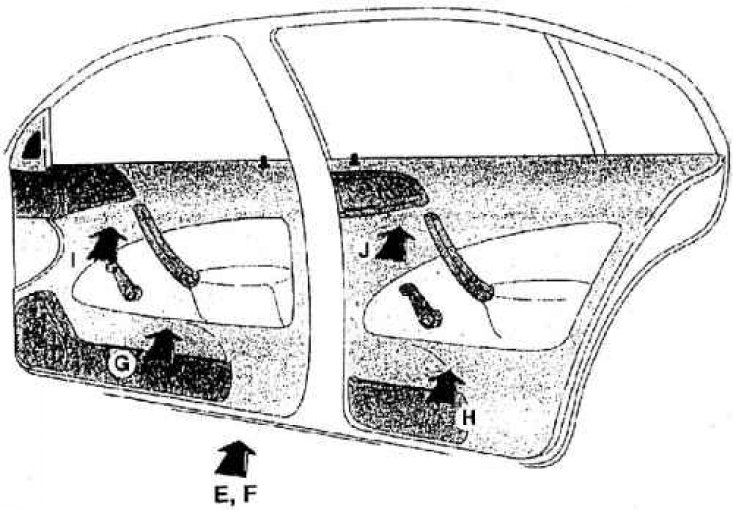
Installing the protective film and fastening clips of the door panel (E, F)
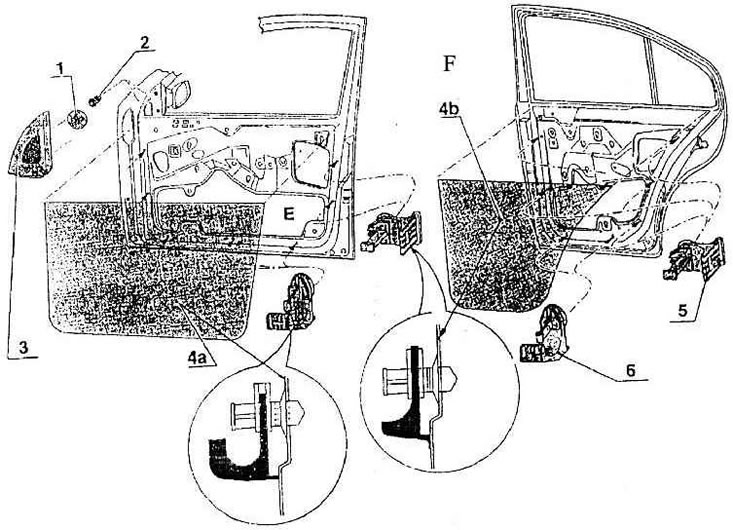
1 - a plug in a car without a radio; 2 - bushing; 3 – housing for internal mounting of the mirror; 4a - protective film of the front doors; 4b - protective film of the rear doors; 5 - cap for fastening the casing assembly; 6 - cap for fastening the skin assembly
Installing front door panels in vehicles with manually lowered windows (G)

1 – nozzle ring; 2 – switch casing; 3 - expansion nut; 4 - bolt 4.2x12; 5 - a bolt with a semi-countersunk head M6x20; 6 – nozzle ring with a light diode; 7 - front door panel assembly; 8 - hole for the switch; 9 - the handle of the drop-down window
Installation of rear door panels in vehicles with manual window down (H)
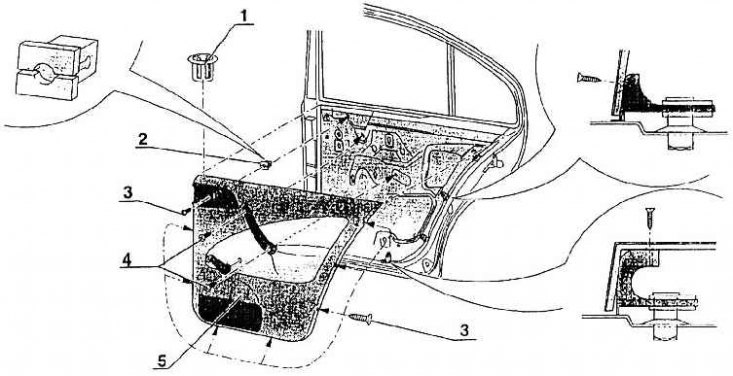
1 – nozzle ring; 2 - expanding nut; 3 - bolt 4.2x12; 4 - a bolt with a semi-countersunk head M6x20; 5 – rear door panel assembly
Installing the trim on the front door (I)
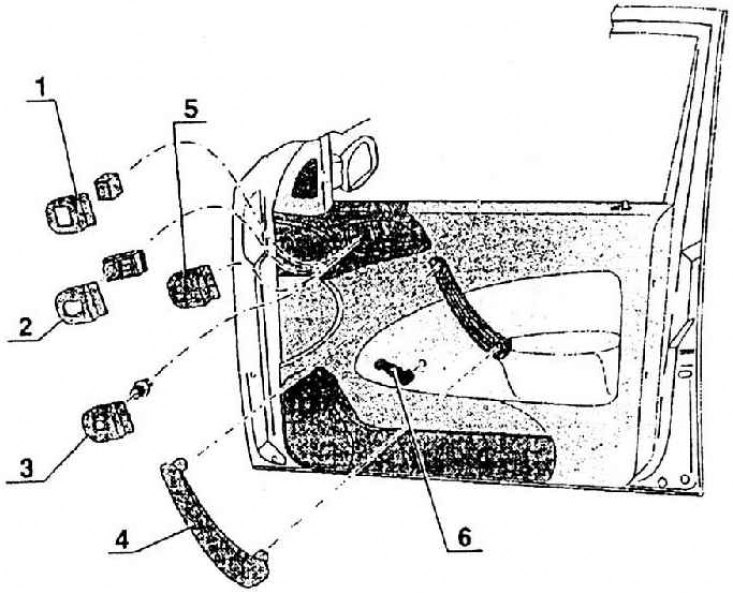
1 – overlay of the switch of electric lowering of a window; 2 – an overlay of electric control of a mirror (only for right hand drive vehicles); 3 – manual mirror control overlay; 4 - overlay of the slamming handle; 5 - mirror control overlay (only on the passenger side for the car (GLX and as special equipment); 6 - window window lifter handle
Installing the lining on the rear door (J)
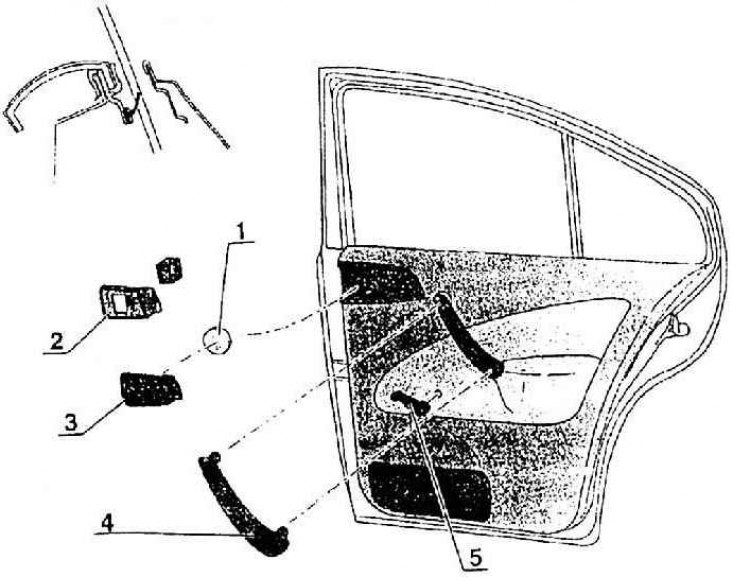
1 - plug (for car without radio); 2 - tweeter overlay; 3 - tweeter overlay and switch (for SLX and special equipment); 4 - overlay of the slamming handle; 5 - window window lifter handle
Door panels in vehicles with electric windows
Door panel (electric window lowering)
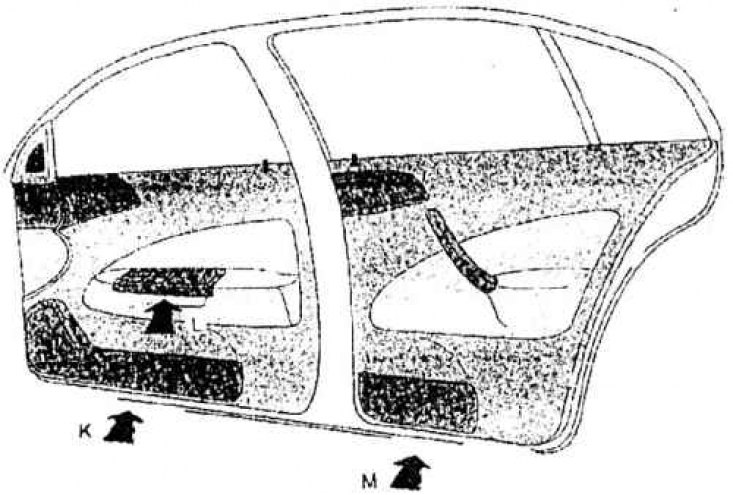
Driver side door panel (vehicles with electric windows), view K
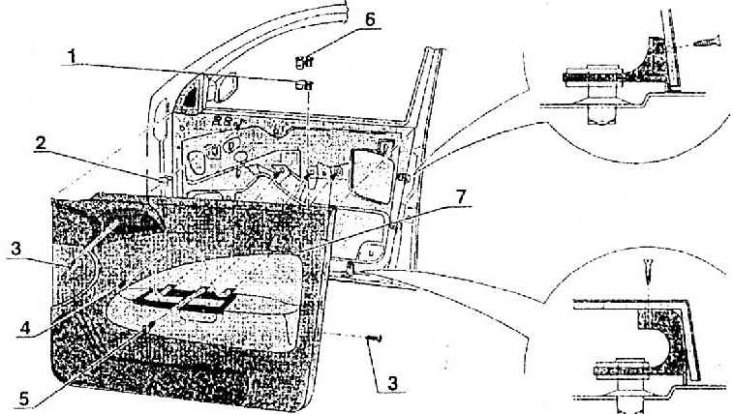
1 – nozzle ring; 2 - expansion nut; 3 - bolt 4.2x12; 4 - a bolt with a semi-countersunk head M6x20; 5 - a bolt with a semi-countersunk head M6x25; 6 – nozzle ring with LED light diode; 7 - door panel assembly front (electric window lowering)
Door panel on vehicles with electric windows (type M)
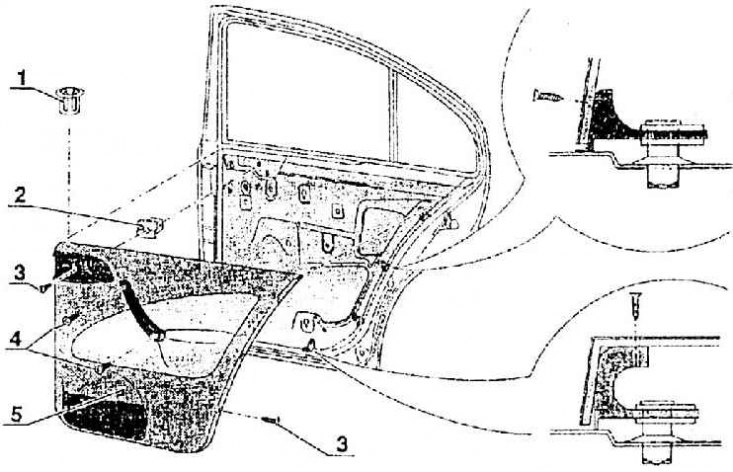
1 – nozzle ring; 2 - expanding nut; 3 - bolt 4.2x12; 4 - a bolt with a semi-countersunk head M6x20; 5 - door panel assembly
Driver side door panel (vehicles with electric windows), view L
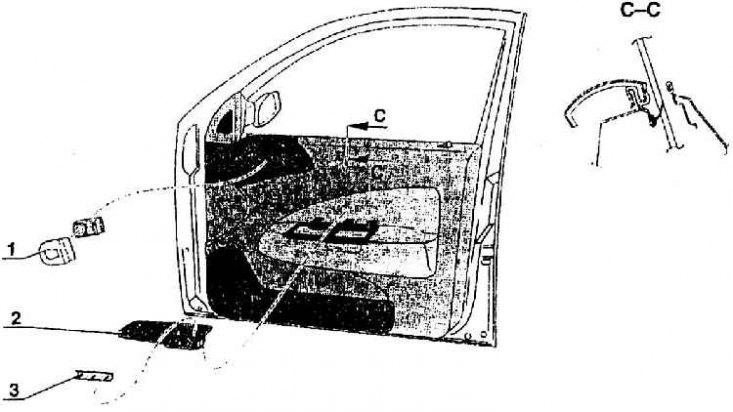
1 – an overlay of electric control of a mirror; 2 - handrail - upper part; 3 - the bottom of the handle - the lower part
Door panels are made of polypropylene filled with wood flour. The volumetric profile is obtained by pressing in a hot state. During pressing, the outer surface of the products is protected by a PVC film (PVC). Middle part of the panel (the so-called mirror) upholstered in textile according to vehicle modification. It goes without saying that the front and rear door panels, as well as the right and left doors, differ from each other. On the front doors of SLX vehicles with electric windows, there is also a difference between the panels of the car with control on the right and on the left side. The driver's panel has a plastic holder in the handrail of the slamming handle with plug-in switches for electric window lowering, child safety control and a central locking internal control switch. In cars of modifications LX and CLX (without electric window control) on the panels are separate vertically oriented handrails of slamming handles on all doors.
The front and rear door panels have bolted hand luggage pockets. The front pockets have speaker grills. The plastic pockets are attached with screws from the inside out. In GLX vehicles, only the switch for the internal control of the central door lock is located on the panel. In panels (at the front top corners) the inside door handles and the door mirror handle are located or – and on vehicles with electric mirror control – the switch is inserted. The holes are covered with plastic lining.
Profiled elements made of polypropylene foam are glued on the inner surface of the panel, which serve to absorb the deformation energy in the event of a side impact.
A protective film is glued under the panel on the inner leaf of the door. To attach the panel to the inner sheets of the door, it is inserted into the sealing profile in the upper part, the side parts and the bottom are bolted to two-piece plastic brackets. The side brace is different from the bottom brace. The front panel has three pistons at the bottom and three pistons on the front and rear faces. The back panel is fixed at the bottom with two brackets, on the side of the hinges to also two and on the back face with three brackets. The clip-on clips in the lower part are hammered into the holes and the door leaf and locked with a plastic spacer clip. With the upper part, which can move, the caps are latched over the edge of the panel and bolts, threaded from the outer surface of the panel, are screwed. All panels still have a bolt fastening in the plastic nut of the door and in the places of the inner handle of the lock. When dismantling the panel, the brackets are left on the door, they must not be pulled out. The panel is dismantled by unscrewing the bolts.
